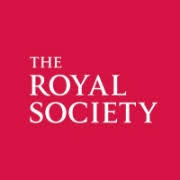Addressing humans’ voracious consumption of nature
In a collection of essays by leaders is sustainability sciences curated by the UK's Royal Society, Jianguo "Jack" Liu links global appetites to biodiversity loss

Global biodiversity has been drastically declining in the past several decades. The traditional narrative of how humans destroy nature has the simplicity of a folk story. Humans consume, biodiversity shudders. Yet the Earth’s complexity rarely is served by simple stories.
The United Nations is developing a new blueprint (Post-2020 Biodiversity Framework) to conserve biodiversity over the next decades. To help shape the blueprint, The Royal Society, the world’s oldest independent scientific academy of distinguished scientists based in the United Kingdom, has invited leading scientists to write essays in which they share their visions and perspectives.
As part of the suite of essays, Michigan State University (MSU) sustainability scholar Jianguo “Jack” Liu shows the complicated saga of the growing needs and appetites of people and the new ways science can understand this tangle of want, consume, destroy and conserve.
complicated saga of the growing needs and appetites of people and the new ways science can understand this tangle of want, consume, destroy and conserve.
“The global community must engage if we want to conserve what ultimately keeps us alive,” said Liu, the Rachel Carson Chair in Sustainability and director of MSU’s Center for Systems Integration and Sustainability. “We need complete stories about how we are affecting biodiversity at all levels, and we need to tell those stories to give people ways to make constructive decisions.”
Liu reimagines the consumption = biodiversity loss simplicity as a more comprehensive understanding. When people in one region eat more meat, for example, it isn’t just a matter of distant meat-supplying regions suffering loss of natural landscapes to pastures while consumers grow plump and happy.
Liu demonstrates how the new scientific framework of telecoupling disrupts that cause/effect. Applying the telecoupling framework, which examines human-nature interactions over distances, has revealed some unsettling surprises. Countries of importing food have not made them immune to environmental harm. Exporting soybeans from Brazil and the US, for example, has spurred farmers in China to grow more corn, triggering more nitrogen pollution and biodiversity habitat disruption. Even the well-meaning cry of locavores extolling farm-to-table practices is not universally wise, especially if that farm is in a biodiversity hot spot.
The framework creates a more real – and thus more comprehensive understanding of the impacts of consumption changes. The telecoupling framework looks not just cause and effect in supply and demand places, but accounts for feedbacks and impacts that spill over into the places between supply and demand.
“The telecoupling framework enables us – and challenges us – to see some truths that may be uncomfortable,” Liu said. “It has shown us that our consumption has vast consequences, both on our doorsteps, and far away from where desired products are created, and in the places in between. The good news is a full understanding is the first step in making positive change.”
Consumption, Liu notes, is exploding as populations and prosperity grow – with global total spending leaping 25 fold from 1970 to 2018. More significant than population is numbers of households - the true drivers of consumption. More divorce, more people living alone, mean more households demanding building materials, furnishings, appliances and more. This pattern is particularly strong in countries also home to biodiversity hotspots.
Meat-based diets require more land, water and energy than plant-based diets, and thus take a greater toll on biodiversity. A growing fondness for consumer products with short lives – from mobile phones to short-lived fashions – generates more pollution and waste. And increasingly what we consume is produced far away, which can amplify the impacts.
The point, Liu says, is all these gives and takes must be tallied and addressed if biodiversity is to be conserved or properly restored. It will require, he says, a more holistic reimagining of what it takes to conserve – and embracing that it is not a single-solution quest. And it will require turning these results into compelling information consumers can understand and use.
“We now have many tools to better address the causes that threaten biodiversity,” Liu said. “These tools are empowering – they are ways to help consumers understand their role in nature’s survival.”
They include enhanced, dynamic tracing throughout and beyond supply chains to help consumers understand how their choices affect the world’s biodiversity. Building in incentives and penalties for decisions would bolster measures.
He also advocates learning to value resources beyond their dollar value, instilling systems that take telecoupling’s cascading impacts into account.



 Print
Print Email
Email

